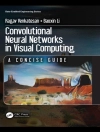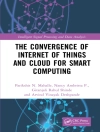Architecture and Design for the Future Internet addresses the Networks of the Future and the Future Internet, focusing on networks aspects, offering both technical and non-technical perspectives. It presents the main findings of 4WARD (Architecture and Design for the Future Internet), a European Integrated Project within Framework Programme 7, which addressed this area from an innovative approach. Today’s network architectures are stifling innovation, restricting it mostly to the application level, while the need for structural change is increasingly evident. The absence of adequate facilities to design, optimise and interoperate new networks currently forces a convergence to an architecture that is suboptimal for many applications and that cannot support innovations within itself, the Internet. 4WARD overcomes this impasse through a set of radical architectural approaches, built on a strong mobile and wireless background. The main topics addressed by the book are: the improved ability to design inter-operable and complementary families of network architectures; the enabled co-existence of multiple networks on common platforms through carrier-grade virtualisation for networking resources; the enhanced utility of networks by making them self-managing; the increased robustness and efficiency of networks by leveraging diversity; and the improved application support by a new information-centric paradigm in place of the old host-centric approach. These solutions embrace the full range of technologies, from fibre backbones to wireless and sensor networks.
Tabella dei contenuti
1. Introduction.- 2. A System Overview.- 3. Socio-economic.- 4. Network Design.- 5. Naming and Addressing.- 6. Security Aspects and Principles.- 7. Interdomain Concepts and Quality of Service.- 8. Managing Networks.- 9. How Connectivity is Established and Managed.- 10. How to Manage and Search/Retrieve Information Objects.- 11. Use Case-From Business Scenario to Network Architecture.- 12. Prototype Implementations.- 13. Conclusions.- Appendix Project Description and Reports.- Glossary.- Index.-
Circa l’autore
Luis M. Correia received the Ph.D. in Electrical and Computer Engineering from IST-TUL (Technical University of Lisbon) in 1991, where he is currently a Professor in Telecommunications, with his work focused in Wireless/Mobile Communications in the areas of propagation, channel characterisation, radio networks, traffic, and services. He has acted as a consultant for Portuguese mobile communications operators and the telecommunications regulator, besides other public and private entities. Besides being responsible for research projects at the national level, he has been active in various ones within European frameworks of RACE, ACTS, IST, ICT and COST (where he also served as evaluator and auditor), having coordinated two COST projects. He has been supervising students at both the M.Sc. and Ph.D. levels, having authored many papers and communications in international journals and conferences, for which he has served also as a reviewer, editor, and board member. He was part of the COST Domain Committee on ICT. He was the Chairman of the Technical Programme Committee of several conferences, namely PIMRC’2002. He is part of the Expert Advisory Group and of the Steering Board of the European e Mobility platform, and the Chairman of its Working Group on Applications.












